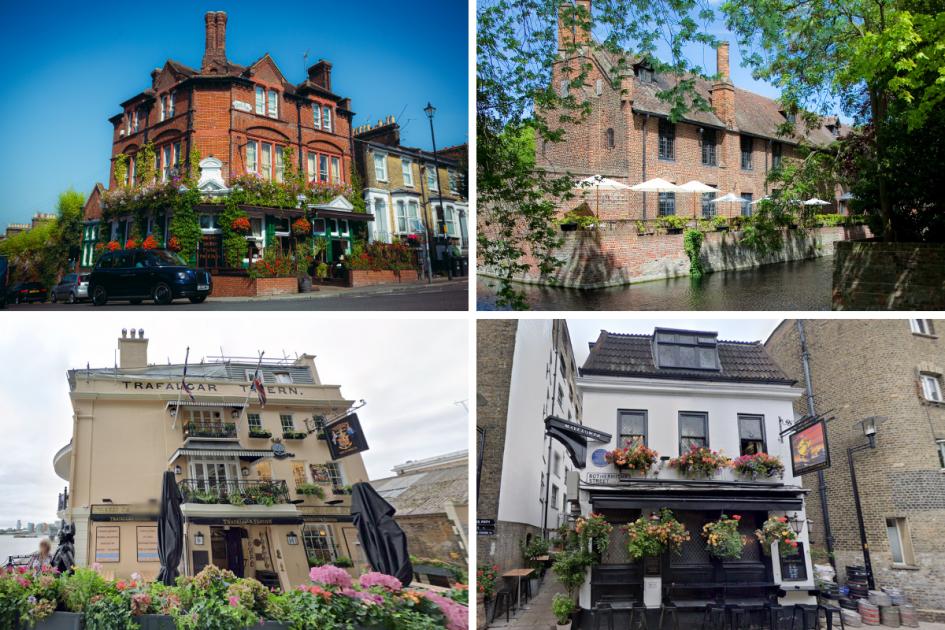Viridor wants to increase the capacity of its Beddington facility by 10%, from 347,422 tonnes to 382,286 tonnes per year.
Earlier this month, the Environment Agency launched a consultation which runs until 23 December on Viridor’s proposals (see letsrecycle.com story).
The four SLWP boroughs of Croydon, Kingston, Merton and Sutton announced today (24 November) they had submitted a joint response, in which they said they “strongly object” to Viridor’s plans.
They say Viridor would like to treat “significantly” more third-party waste at the facility than was originally planned.
They also say the current limits already allow for “sufficient waste treatment capacity”. The amount of residual waste the SLWP boroughs generate has been on a “steady downward trend” for many years, the partners say, meaning Viridor already has additional capacity for third-party waste without any increase in the facility’s overall capacity.
And, they say Viridor has not been able to meet their expectation that the Beddington EfW plant should be “100% compliant with its existing environmental permit 100% of the time”.
A Viridor spokesperson told letsrecycle.com that increasing the Beddington EfW plant’s capacity would “enable waste to move higher up the waste hierarchy” by diverting it away from landfill, reducing greenhouse gas emissions and producing energy from what remains.
‘Significant expansion’
In a joint statement, the SLWP boroughs said: “The SLWP boroughs remain certain that the Beddington Energy Recovery Facility is an environmentally sustainable, cost-effective and safe way of treating household residual waste.
Approving this permit variation would see the facility expand significantly in excess of its original scale and purpose
- SLWP consultation response
“The ERF has delivered significant benefits to the boroughs in terms of carbon reduction and savings.
“However, approving this permit variation would see the facility expand significantly in excess of its original scale and purpose.
“We have set out our reasons for objecting to this permit variation application and we call on the Environment Agency to refuse it.”
Variation
The Viridor spokesperson said: “This variation is being submitted following extensive reviews of the performance of the Beddington ERF which have concluded that it has ability to treat additional waste safely and in full compliance with the site permit.
[The Beddington ERF] has ability to treat additional waste safely and in full compliance with the site permit
“The emissions limits applied to the permit will remain unchanged under this variation.
“As a region, the South East and greater London area continues to see an increase in residual waste volumes with large quantities either being exported to European ERF’s or directed to UK landfill.
Third-party waste
The Beddington EfW was built primarily to service the needs of the SLWP boroughs, the partners say.
The Beddington EfW plant became fully operational in 2019
The SLWP awarded Viridor a 25-year treatment contract in 2012 “on the understanding” that they would build and operate a facility capable of processing up to 302,500 tonnes of residual waste each year, most of which would be residual waste collected from households in the four boroughs (see letsrecycle.com story).
The boroughs say they accepted that the remaining capacity would be used for third-party waste and that this was necessary to make the facility commercially viable.
The Environment Agency allowed Viridor to increase the Beddington plant’s capacity by 15% to 347,422 tonnes per year in December 2020, just less than two years after the facility entered full operation.
Commenting on Viridor’s further expansion plans, the SLWP partners said: “These relatively minor variations have a cumulative effect and if this latest application is granted it would result in the facility processing 26% more waste than it was originally permitted for, which is significant.”
Treatment capacity
According to the London Plan published in March 2021, the SLWP partners note, the London Mayor’s analysis of future waste treatment capacity requirements suggests that, “if London achieves the Mayor’s reduction and recycling targets, it will have sufficient energy from waste capacity to manage London’s non-recyclable municipal waste.”

This statement predates the approval of the Cory’s second EfW facility at Belvedere, which will have a capacity of 655,000 tonnes per year.
The SLWP also notes that Viridor themselves have just acquired the rights to develop the Thameside EfW at Tilbury which has a capacity of 350,000 tonnes per year, while Indaver is currently developing an EfW plant with a capacity of 595,000 tonnes per year at Rivenhall in Essex (see letsrecycle.com story).
Operational deliverability
Elsewhere in their response, the SLWP partners say the bunker at Beddington was “not designed to receive 382,286 tonnes of waste” and there are already times during the year when waste receipt areas operate at maximum capacity.
Any additional pressure on the waste receipt areas could have knock-on effects for the SLWP’s collection crews, the partners say, as three of the four boroughs deliver residual waste directly to the facility.
“Any disruption or temporary cessation of the receipt of waste at the ERF due to overcapacity issues could in turn disrupt local waste collection services, with potentially serious consequences,” the partners say.
\r\n\r\n\r\n\r\n\r\n\r\n\r\n\r\n\r\n\r\n\r\n\r\n\r\n”,”body”:”\r\n\r\n”,”footer”:””},”advanced”:{“header”:””,”body”:””,”footer”:””}}”,”gdpr_scor”:”true”,”wp_lang”:””,”gdpr_consent_version”:”1″,”gdpr_uvid”:”9af5ef4160b22a4ce1274eccdfc0f78e”,”stats_enabled”:””,”gdpr_aos_hide”:”false”,”consent_log_enabled”:””,”enable_on_scroll”:”false”};
/* ]]> */
https://news.google.com/__i/rss/rd/articles/CBMiZWh0dHBzOi8vd3d3LmxldHNyZWN5Y2xlLmNvbS9uZXdzL3NvdXRoLWxvbmRvbi1ib3JvdWdocy1zdHJvbmdseS1vYmplY3QtdG8tYmVkZGluZ3Rvbi1leHBhbnNpb24tcGxhbnMv0gEA?oc=5




